Original Source: https://ecommerce-platforms.com/articles/best-web-hosting
Web hosting fuels the internet. And web hosting companies manage the servers where all websites get stored—more specifically, website files. Online stores, blogs, forums, and every type of website, app, and game on the internet requires web hosting, and that’s why it’s so essential to find a high quality host. That’s why we researched and decided on the absolute best web hosting providers, to ensure your website never crashes, to speed up your loading speeds, to improve your SEO.
The good news is that most reputable web hosts offer a simple, intuitive way to place your website on their servers. Not to mention, our top choices offer reasonable pricing, top-notch security, and an incredible amount of features to integrate with your favorite tools.
How We Conducted the Research
To say the web hosting market is over-saturated is an understatement. Thousands of companies around the world offer server space for a price. A quick search online is bound to deliver a seemingly never-ending list of web hosting options, from small to large, cheap to expensive, simple to complicated.
Since this website is a resource for ecommerce platforms, our team has researched and reviewed hundreds of web hosting providers over the years to identify which have the server capabilities, security measures, and the best user experiences to support scaling online stores.
To compile this list, we looked back at our previous research and combined it with the updated offerings from the top-50 hosting providers in the world. After that, we cut down the list by eliminating those without real-world uptime testing, state-of-the-art security measures, and reasonable pricing.
As a final test, we ran rigorous user-experience tests to understand which web hosts offer the ideal, modern dashboard experience along with quick integrations, managed hosting options, and seamless experiences for all user levels.
Best Web Hosting Providers: Our Top Picks
As a result, we ended up with a list of the top web hosting providers on the market. Take a look at our recommendations below.
1. SiteGround – Our pick for the best web hosting
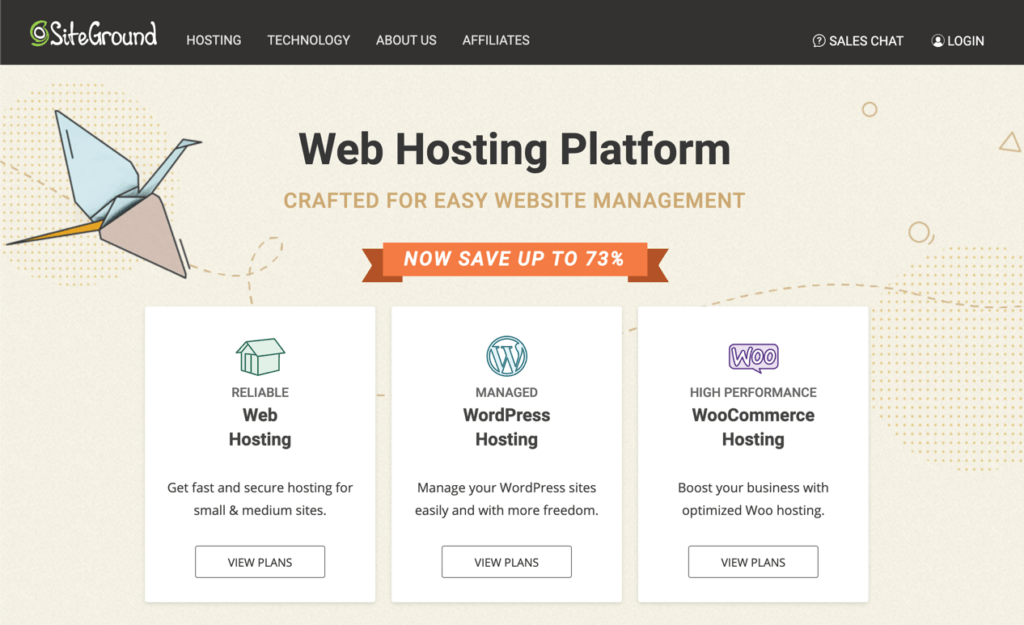
SiteGround is our top choice for reliable web hosting because of its simple website management tools, fast and secure hosting, and affordable hosting packages. The standard web hosting from SiteGround is a wonderful starting point for small online stores, blogs, and business websites, but it also offers the opportunity to upgrade to managed WordPress hosting, WooCommerce hosting, and cloud hosting.
Pricing
New users have an opportunity to sign up for SiteGround’s frequent promotional pricing, which could cut pricing for the first several years depending on the plan you choose. After the promotion, it switches to standard pricing, which still provides a better value than much of the competition.
Here are the SiteGround shared hosting plans:
StartUp: $14.99 per month ($3.99 per month with the promotion) for one website, 10 GB of web space, 10k monthly visits, a free SSL certificate, daily backups, free CDN, free email, enhanced security, ecommerce tools, managed WordPress options, caching, unlimited databases, and collaboration. GrowBig: $24.99 per month ($6.69 per month with the promotion) for unlimited websites, 20 GB of web space, 100k visits per month, everything from the previous plan, on-demand backups, faster PHP, and a staging section. GoGeek: $39.99 per month ($10.69 per month with the promotion) for unlimited websites, 40 GB of web space, 400k monthly visits, everything from the previous plans, staging + Git, white-label client options, priority customer support, and the highest tier of resources offered through SiteGround.
Pros ?
Cons ?
Pros ?
SiteGround provides top-notch promotional pricing that remains affordable after the deal is over.
All website hosting plans receive a free SSL certificate and backups for the best possible security.
The web hosting has managed WordPress elements and ecommerce-enabled functionality for setting up a website fast and launching an online store.
You can add collaborators to manage the website, share ideas, and grant user access.
SiteGround plans are designed for scaling businesses, meaning you can upgrade at anytime as your site grows.
The out-of-the-box caching and free CDN come together to improve site speed.
Some of the plans offer staging sites to test plugins, themes, and website designs prior to publishing anything online.
The highest-tiered plan provides advanced tools for working with web design clients, like priority customer support, staging + Git, and white labeling.
SiteGround is optimized for the most popular content management systems like WordPress, Drupal, and Joomla. This provides one-click installations to your favorite website builders.
The SiteGround dashboard makes web development and management easy for all users, with modules for domain management, site-building, email services, and more.
Cons ?
SiteGround offers promotional periods for 12 months only. You don’t get discount pricing if you sign up for a period longer than that.
The pricing on SiteGround’s website is a little misleading, since they lure you in with the promotional pricing, but then that goes up to the regular pricing after a year. You also have to pay for the full year in advance.
We’d like to see elements like domain registration, domain privacy, and site scanning included in the pricing. Those are all add-ons.
Go to the top

2. WP Engine – Runner-up for the best web hosting
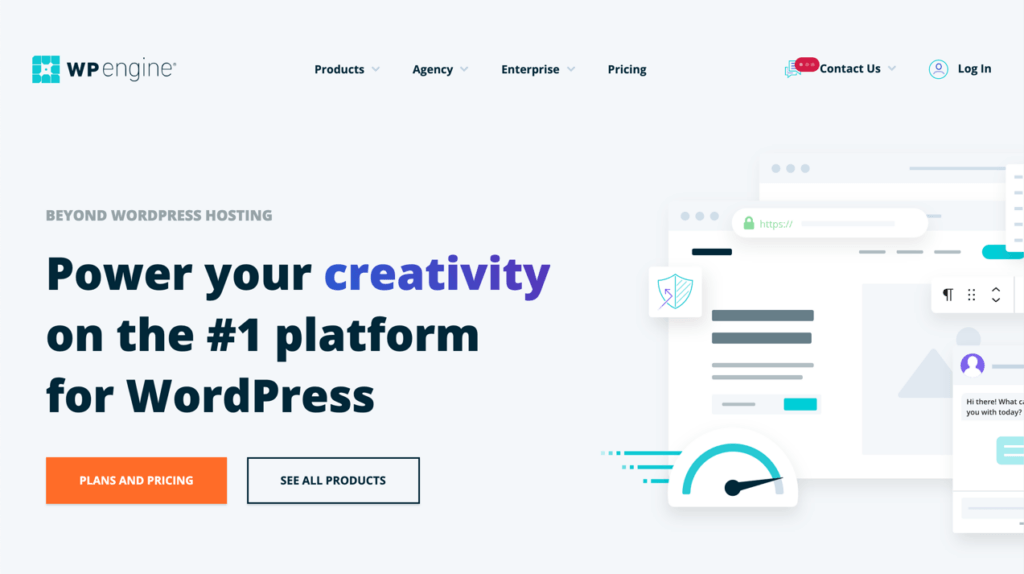
Trailing close behind SiteGround is WP Engine. Although slightly more expensive, we actually feel that WP Engine is more transparent with its pricing than SiteGround, and you’re simply starting out with regular pricing as opposed to getting a year at a discounted rate. Therefore, the pricing of WP Engine is more or less the same as the top contenders on this list, even if it seems like it’s pricier. Having said that, WP Engine excels with its managed WordPress hosting, alllowing you to launch a fast website, keep it secure, and complete upgrades without having to do much on your end. Much of the process is automated, and you can opt for WordPress hosting, WooCommerce hosting, or enterprise hosting. They even have a full suite for running an agency or managing your freelance business.
Pricing
WP Engine offers transparent pricing based on whether you pay on a monthly or yearly basis. You can also get in touch with the WP Engine team for a more advanced enterprise hosting solution.
Managed WordPress plans include:
Startup: $25 per month (annual) or $30 per month (monthly) for one website, 25k monthly visits, 10 GB of storage, and 50 GB of bandwidth. This also includes customizable themes, one-click staging, backups, automated PHP and WordPress updates, proactive threat blocking, and maximum speed. You can upgrade this plan for more WordPress sites, visitors, and storage. There are also upgrades for extra security, automated plugin updates, and bandwidth. Professional: Starting at $49 per month for everything in the previous plan, 3 sites, 75k visits per month, 15 GB of storage, and 125 GB of bandwidth.Growth: Starting at $96 per month for everything in the previous plans, 10 sites, 100k visits per month, 20 GB of storage, and 200 GB of bandwidth per month. Scale: Starting at $242 per month for everything in the previous plans, 30+ sites, 400k visits per month, 50 GB of storage, and 500 GB of bandwidth. Dedicated Hosting: Custom pricing for anything you need over 300 sites, 400k visits, and 50 GB of storage.
Ecommerce hosting plans include:
Startup: Starting at $30 per month for a platform built for WooCommerce, automated plugin updates, premium WooCommerce themes, one website, 25k visits per month, 10 GB of storage, 50 GB of bandwidth, and options to upgrade all of those. Professional: Starting at $63 per month for everything in the previous plan, 3 sites, 75k monthly visits, 15 GB of storage, and 125 GB of bandwidth. Growth: Starting at $117 per month for everything in the previous plans, 10 sites, 100k visits per month, 20 GB of storage, and 200 GB of bandwidth per month. Scale: Starting at $292 per month for everything in the previous plans, 30+ sites, 400k visits per month, 50 GB of storage, and 500 GB of bandwidth per month. Dedicated Servers: Custom pricing for everything you need over 30 sites, 400k visits per month, and 50 GB of storage.
Pros ?
Cons ?
Pros ?
WP Engine offers options for managed WordPress hosting or ecommerce solutions.
We know WP engine for having significantly faster load times than its competition.
You can secure your websites with daily backups, managed upgrades, and constant website monitoring.
The customer support is available 24/7/365.
You can run an entire agency or freelance web design platform with one of the white-label plans.
Everything is managed, allowing you to launch a WordPress store within minutes and never have to worry about PHP or WordPress updates.
WP Engine offers a modern, sleek dashboard that’s miles ahead of its competitors when it comes to ease of use.
They offer a quick migration tool for moving over websites from other hosts.
You receive free SSL certificates for securing all transactions that go through your store.
WP Engine offers workflow tools like GIT and SSH access through MySQL and WP-CLI.
Stage sites with a one-click staging tool.
You gain access to several premium WordPress themes and frameworks.
All backups are automated on a regular basis.
Cons ?
Although very transparent, the pricing for WP Engine is definitely higher than budget providers like Siteground.
We’d like to see free automated plugin updates, considering they’re selling “Managed WordPress Hosting.” We would assume automated plugin updates are essential to consider it managed.
You don’t receive an extra level of security (with firewall, DDOS mitigation, and CDN) unless you pay an extra fee.
The ecommerce solution is nice, but they’re essentially charging extra for the convenience of not having to install the WooCommerce plugin–which is extremely easy to do on your own.
Further reading ?
WP Engine Review: Managed WordPress Hosting for Serious Online Stores
Go to the top

3. GreenGeeks – Best Environmentally Friendly Option

GreenGeeks serves as a must-see during your web hosting research if you’re interested in a host that cares about eco-friendly solutions. We recommend it for companies and individuals that care about the environment, seeing as how GreenGeeks puts an emphasis on putting back 3x the power it uses into renewable energy. Not only that, but GreenGeeks offers reasonable pricing, high-speed technologies, and top-notch storage hardware to ensure your website remains fast, secure, and ready for scaling.
Pricing
GreenGeeks sells standard web hosting along with WordPress, VPS (virtual private server hosting), and reseller hosting. In this section, we’ll outline the pricing for standard web hosting, after which you can upgrade as your small business scales. GreenGeeks also plants one tree for each plan you sign up for.
Plans include:
Lite: $10.95 per month ($2.95 per month promotional pricing) for one website, standard performance, nightly backups, multi-user access, a green energy match, unlimited databases, caching, a CDN, free domain for a year, free SSL, multiple email accounts, 50 GB of web space, and more. Pro: $15.95 per month ($5.95 per month promotional pricing) for unlimited websites, improved performance, unlimited web space, unlimited emails, everything from the previous plan, on-demand backups, and a WordPress repair tool. Premium: $25.95 per month ($10.95 per month promotional pricing) for unlimited websites, the best performance offered by GreenGeeks, everything in the previous plans, a free dedicated IP, object caching, and free AlphaSSL.
Pros ?
Cons ?
Pros ?
GreenGeeks tries to help the environment by putting resources back into renewable energy, using eco-friendly hardware, and planting trees for every user that signs up.
The standard hosting plans include several free elements, like email accounts, backups, caching, and SSL certificates.
You can collaborate with several people on the website with multi-user access.
Some of the plans include on-demand backups, AlphaSSL, and object caching.
You can choose which data center you want to use.
The data centers use renewable energy and offer a reliable and powerful infrastructure to place your websites.
You have the option to go with WordPress hosting for managed WordPress updates, free WordPress migrations, and enhanced WordPress security.
You can opt for faster, more reliable hosting with VPS hosting.
Cons ?
GreenGeeks isn’t all that transparent about performance, seeing as how they only tell you that performance improves as you upgrade in the pricing. We’d prefer seeing the best performance for all plans, but it appears they might improve the performance as you pay more money.
Further reading ?
The Best Green Web Hosting Out There (Jan 2022)
Go to the top

4. Dreamhost
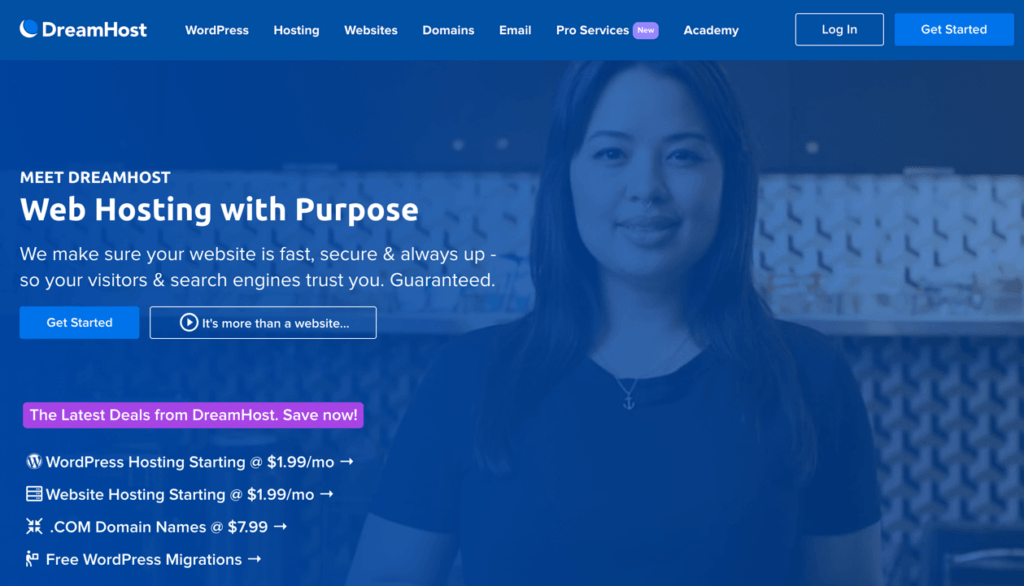
Dreamhost specializes in WordPress hosting at a reasonable price. It’s known for high speeds, inexpensive add-ons (like domain names), and its super easy control panel for managing the entire operation. You can sign up for shared web hosting, WordPress hosting, or VPS hosting through Dreamhost. Not to mention, they offer a website builder, along with more advanced types of hosting like cloud and dedicated hosting.
Pricing
With both yearly and monthly plans, and several promotions on a regular basis, you have multiple options to decrease hosting costs, especially when just getting started.
Standard web hosting plans include:
Shared: Starting at $6.99 per month ($2.95 with promotional pricing) for one website, a free domain, unlimited traffic, fast SSD storage, WordPress pre-installed, a drag-and-drop website builder, automated WordPress migrations, and a free SSL. DreamPress: Starting at $16.95 per month for one WordPress website. This plan is designed for WordPress users and it supports one website (you can upgrade this), free domain names, 100k monthly visitors, 30 GB of SSD storage, an SSL certificate, unlimited email hosting, website building, on-demand backups, Jetpack, a one-click backup restore, and one-click staging site. VPS: Starting at $13.75 per month (up to $110 per month depending on GBs) for unlimited websites, unlimited traffic, 30 GB of SSD storage, one-click WordPress installation, unlimited email, and 24/7 support team access.
Pros ?
Cons ?
Pros ?
Dreamhost provides many premium tools for free, like an SSL certificate, website builder, and free site migrations.
The cheapest plans still have fast SSD storage.
Some of the plans provide on-demand backups and restoring tools.
The custom control panel is easy to manage.
Dreamhost is known for its always available customer service.
Dreamhost uses solid state drives, making for a faster infrastructure when it comes to caching, database queries, and website loading.
You can install apps like WordPress with the click of a button.
Cons ?
The pricing is a bit confusing with all of their promotions and the fact that the WordPress hosting has some disadvantages when compared to the cheaper Shared hosting. We also noticed this with the VPS hosting.
It would be nice to see unlimited traffic for all plans.
Further reading ?
DreamHost Hosting Reviews (Jan 2022) – Everything You Need to Know
Go to the top

5. Flywheel

Flywheel boasts one of the cleanest, easiest to use dashboards and setup processes compared to all the best WordPress hosts on the market. And that’s exactly what it is: a managed WordPress host with value-oriented plans, a beautiful online interface, and a configuration process that any type of user can enjoy. In short, Flywheel makes it effortless for everyone. You can manage one site for a low price or opt to run an entire agency by white labeling and handing off control to clients.
Pricing
Although Flywheel offers a Growth Suite meant for those who need hosting, billing, and client management, we’ll focus on the managed hosting plans:
Tiny: Starting at $13 per month for one site, 5k visits, 5 GB of storage, 20 GB of bandwidth, SSL certificates, the Genesis framework, plugin security alerts, caching, a CDN, collaboration, backups, site cloning, Google Analytics, a free demo site, local development, free migrations, 24/7 live chat support, managed plugin updates, and optimization insights. Starter: Starting at $25 per month for one site, 25k visits, 10 GB of storage, 50 GB of bandwidth, and everything in the previous plan. Freelance: $96 per month for up to 10 sites, 100k visits, 20 GB of storage, 200 GB of bandwidth, everything in the previous plans, and multisite support. Agency: Starting at $242 per month for up to 30 sites, 400k visits, 50 GB of storage, 500 GB of bandwidth, everything in the previous plans, a migration dashboard, phone support, and a dedicated account manager.
They also offer custom plans.
Pros ?
Cons ?
Pros ?
Flywheel does a wonderful job of offering managed hosting for smaller operations.
All users receive SSL certificates for improved security.
You can build your website with ease by using the Genesis Framework.
Flywheel provides plugin security alerts, auto-healing technology, and other security tools.
There’s a CDN for faster speeds.
Caching comes standard with every plan.
You can transfer billing with the click of a button if you plan to use this for clients.
Nightly backups help out with security.
You can clone and demo sites from the Flywheel dashboard.
Flywheel truly has one of the nicest interfaces out of all web hosts.
Cons ?
The pricing plans aren’t the best value. Although Flywheel cuts pricing by quite a bit, you’ll notice that the plans get limited in the site visits and storage areas.
You don’t get multisite support until the $96 per month Freelance plan.
Go to the top

6. Kinsta
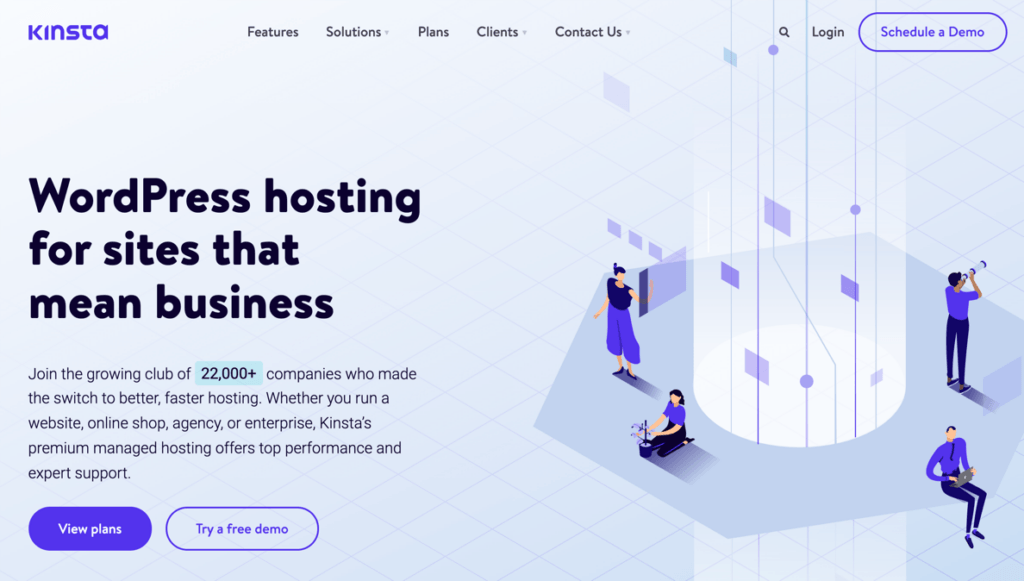
Kinsta provides a high-powered managed hosting platform with possibly one of the fastest infrastructures to place your site thanks to its partnership with Google Cloud Platform. Users gain access to a secure hosting environment, automated backups, caching, and a content delivery network without the high fees you would traditionally expect from cloud hosting. Not only that, but the Kinsta dashboard is modern and intuitive, while also giving you direct access to online resources (like a knowledgebase) and customer support reps.
Pricing
Kinsta has higher pricing than most other hosts on this list, but it’s really one of the best values because of its unmatched speed and advanced tools.
Here are the pricing plans:
Starter: Starting at $30 per month for one WordPress installation, 25k visits, 10 GB of disk space, a free SSL, CDN, staging, and free migrations. Pro: Starting at $60 per month for 2 WordPress installations, 50k visits, 20 GB of disk space, and everything from the previous plan.Business 1: Starting at $100 per month for 5 WordPress installations, 100k visits, 30 GB of disk space, and everything from the previous plans.Business 2: Starting at $200 per month for 10 WordPress installations, 250k visits, 40 GB of disk space, and everything from the previous plans.Business 3: Starting at $300 per month for 20 WordPress installations, 400k visits, 50 GB of disk space, and everything from the previous plans.Business 4: Starting at $400 per month for 40 WordPress installations, 600k visits, 60 GB of disk space, and everything from the previous plans.Enterprise 1 -4: From $600-$1,500 per month for 60-150 WordPress installations, 1M-3M visits, 100-250 GB of disk space, and everything from the previous plans.
Pros ?
Cons ?
Pros ?
You can’t beat the setup and management processes from Kinsta. Not only is it easy to migrate from a different host, but you can launch several websites with the click of a button.
Even beginners will find the MyKinsta dashboard intuitive.
There’s more value in Kinsta pricing plans than most of the competition, seeing as how you get to put your site on the best cloud servers in the world, and you receive things like an SSL, CDN, and staging, for fairly low pricing.
It’s rather easy to scale up your business and overall website with the Kinsta pricing structure.
Kinsta offers self-healing technology and backup retention to ensure the security of your website.
The 24/7 support (along with plentiful online resources) means you always have someone to help you out.
All plans come with multi-user environments.
You can choose from 29 data center locations.
Kinsta provides hack and malware removal services.
Test plugins, templates, and website designs in multiple staging environments.
You’re able to white label your website designs and pass them off to clients.
Kinsta is quite possibly the best web host for speed because of the Google Cloud Platform, MariaDB, and Nginx.
Cons ?
The Starter plan doesn’t have multisite support.
Even though we see great value in Kinsta, there’s no denying it’s more expensive than the competition.
Further reading ?
Kinsta Managed Hosting Review (Jan 2022): All Ecommerce Sites on WordPress Should Check Out This Hosting
The Best Managed WordPress Hosting Providers for 2022
Best Managed WooCommerce Hosting for 2022
Go to the top

7. Cloudways
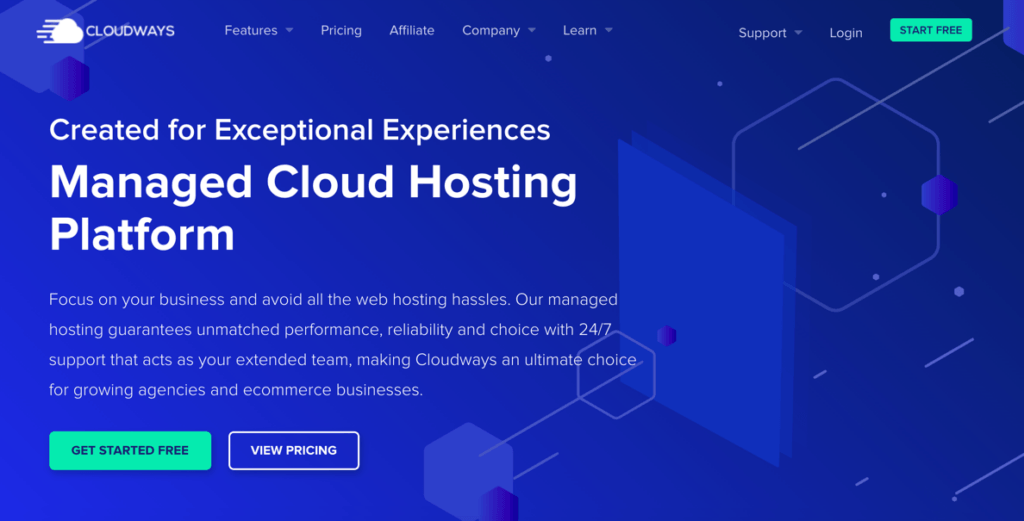
Cloudways provides a managed cloud hosting solution with simplicity and a worry-free experience no matter how large your website network. It’s tough to beat the performance you get from Cloudways, considering its servers offer a built-in CDN, auto-healing tools, and automated backups. Not to mention, you’re able to choose from five cloud providers, tap into an unlimited supply of applications, and take control using the innovative control panel.
Pricing
Pricing for Cloudways depends entirely on the cloud hosting plan you decide on. For instance, you can opt to use AWS (Amazon Web Services), DigitalOcean, Linode, Vultr, or Google Cloud.
We won’t cover them all, but rather give you the basics with DigitalOcean:
$12 per month for 1 GB RAM, 1 core, 25 GB of storage, and 1 TB of bandwidth. This includes 24/7 support, a CDN add-on, free migration, free SSL, dedicated firewalls, auto healing, automated backups, and caching. $50 per month for 4 GB RAM, 2 cores, 80 GB of storage, and 4 TB of bandwidth. You also get everything from the previous plan and some additional tools like Object Cache Pro. $26 per month for 2 GB RAM, 1 core, 5 GB storage, 2 TB bandwidth, and everything from the previous plans. $96 per month for 8 GB RAM, 4 cores, 160 GB storage, 5 TB bandwidth, and everything from the previous plans.
Again, other cloud hosting providers vary in pricing. For instance, AWS starts at around $36 per month when using them through Cloudways.
Pros ?
Cons ?
Pros ?
You have the option to choose between five different cloud host providers.
Some of the cloud hosting providers offer unique features like unlimited application installations from AWS or offsite backup storage from Google Cloud.
All plans provide automated backups to secure your site.
There are other security tools like auto healing, security patching, and SSL certificates.
The object caching pairs well with the CDN add-on to speed up your site.
Cloudways provides team management options for collaboration.
The staging environment assists in testing out tools and trying things out with your design.
You receive HTTP/2 enabled servers and SSH and SFTP access.
Cons ?
It’s confusing for regular users to mess with the five cloud provider system. For instance, many people won’t understand the differences (advantages/disadvantages) when choosing between AWS and Google Cloud.
The pricing isn’t all that affordable for smaller sites except for the basic plans from DigitalOcean and Linode.
Further reading ?
Cloudways Ecommerce Hosting Review (Jan 2022)
Go to the top

8. GoDaddy
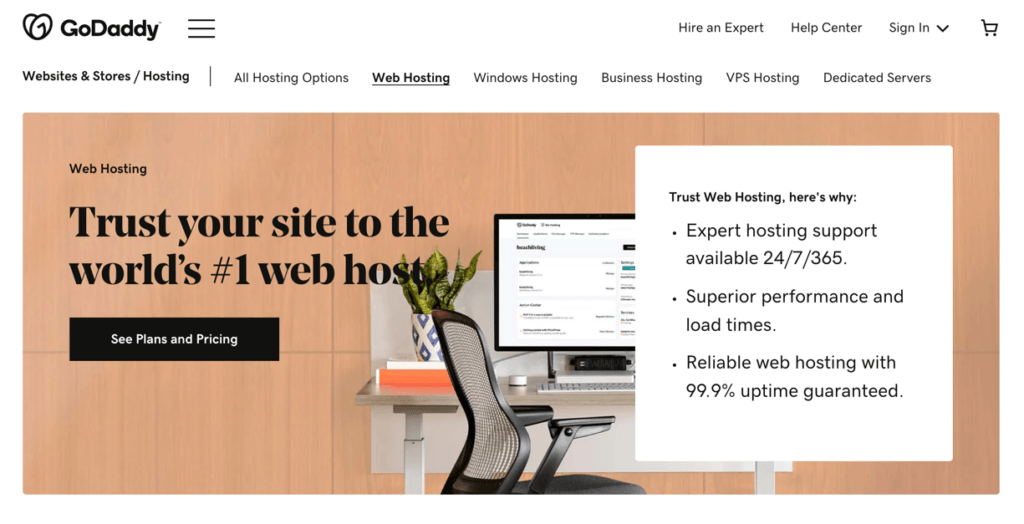
GoDaddy has made more of a name for itself in the domain selling game, but it also serves as an affordable, reliable hosting provider. As one of the best web hosting solutions, GoDaddy offers unparalleled customer support, very inexpensive pricing, and a decent website builder that integrates with WordPress.
Pricing
With GoDaddy, users choose from standard web hosting, WordPress hosting, and ecommerce hosting. However, we’ll mainly cover the standard web hosting seeing as how it’s where many businesses will start.
Plans include:
Economy: Starting at $5.99 per month for one website, 100 GB of storage, 10 databases, unmetered bandwidth, a one-click WordPress installation, and promotions like a free domain and email address for a year. Deluxe: Starting at $7.99 per month for standard performance, unlimited websites, unlimited bandwidth, unlimited storage, 25 databases, and everything from the previous plan. Ultimate: Starting at $12.99 per year for increased processing power, unlimited websites, everything from the previous plans, and a free SSL certificate. Maximum: Starting at $19.99 per month for the highest level of processing power and speed from GoDaddy, along with unlimited websites, everything from the previous plans, and unlimited free SSLs for all websites.
Pros ?
Cons ?
Pros ?
GoDaddy is close to the cheapest hosting solution you can find that doesn’t go up way too high after the promotional periods.
Even the Economy plan is a good value with 100 GB of storage and 10 databases.
The control panel is easy to understand, and you can install WordPress with the click of a button.
You can choose from multiple global data centers to deliver content faster to users.
It’s easy to scale up a website with GoDaddy, since it allows you to upgrade elements like CPU, storage, and I/O with a one-click purchase. You can also upgrade your plan at any time.
You gain access to over 150 free apps like those from Joomla, WordPress, and Windows.
GoDaddy has a solid website builder that functions well with WordPress and provides multiple themes to launch a design.
GoDaddy offers a pre-installed ecommerce plugin that works with WooCommerce. This way, you can get paid quickly and pay lower transaction fees.
Cons ?
You don’t gain access to an SSL until you opt for some of the higher plans.
The free items usually only last for the first year, such as the email address, domain, and SSL certificate.
Most of the promotional pricing requires a 3-year commitment.
Further reading ?
GoDaddy Website Builder Review: Rudimentary, but Good for Some
GoDaddy’s Online Store Rocks for Beginners
Go to the top

Which of the Best Web Hosting Providers is Right for You?
From SiteGround to GoDaddy, each web host from our rankings has its advantages. We like SiteGround for the best web hosting value, but WP Engine is the top solution for those who want the speediest site with managed WordPress hosting–just be ready to pay a little extra for it. If you want to partner with an environmentally-conscience host, try out GreenGeeks. Other budget web hosts include Dreamhost and GoDaddy (or even Bluehost). For additional managed hosting providers with high-speeds, consider Kinsta, Flywheel, and Cloudways. Just try to look for options that have something like a 30-day money-back guarantee (that way you can test them out). Then let us know in the comments which you would consider the best web hosting services!
The post Best Web Hosting Providers for Value, Speed, and Security (Jan 2022) appeared first on Ecommerce Platforms.
 One of the most talked-about digital elements of the new year leads our roundup of tools and resources this month – NFTs. The NFT landscape seems to be exploding right now and that includes tools for designers to get in on the game as well.
One of the most talked-about digital elements of the new year leads our roundup of tools and resources this month – NFTs. The NFT landscape seems to be exploding right now and that includes tools for designers to get in on the game as well.

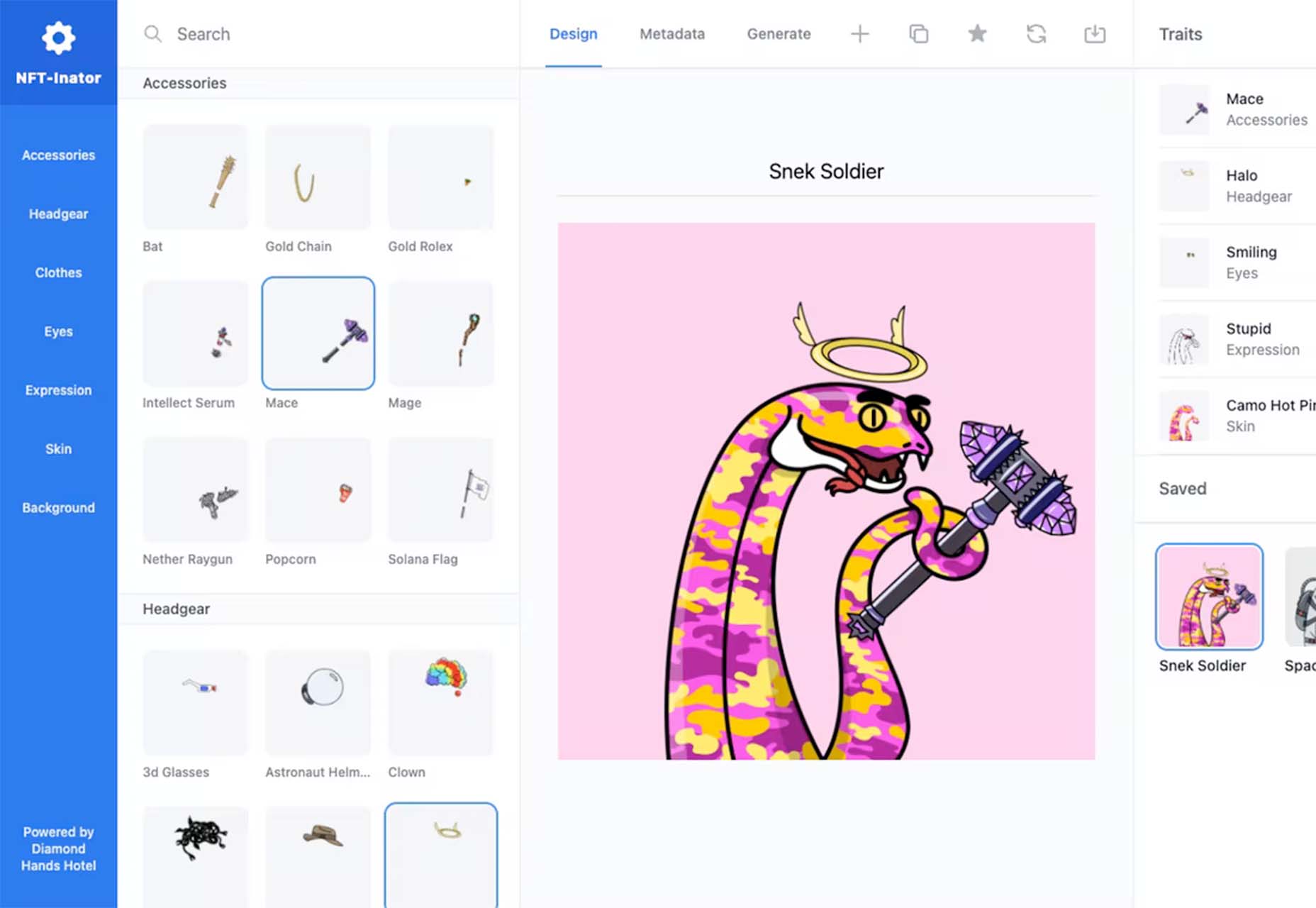



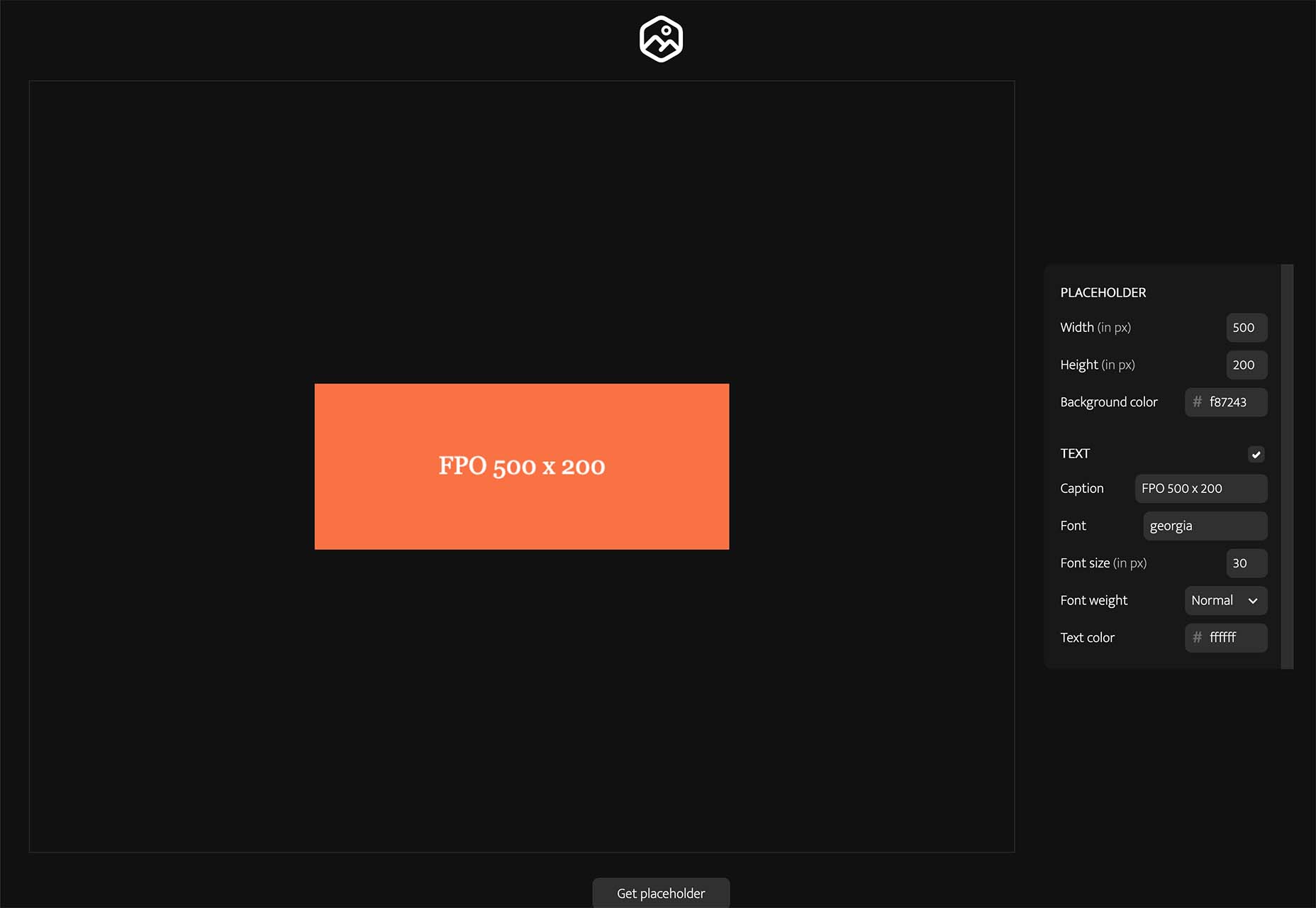
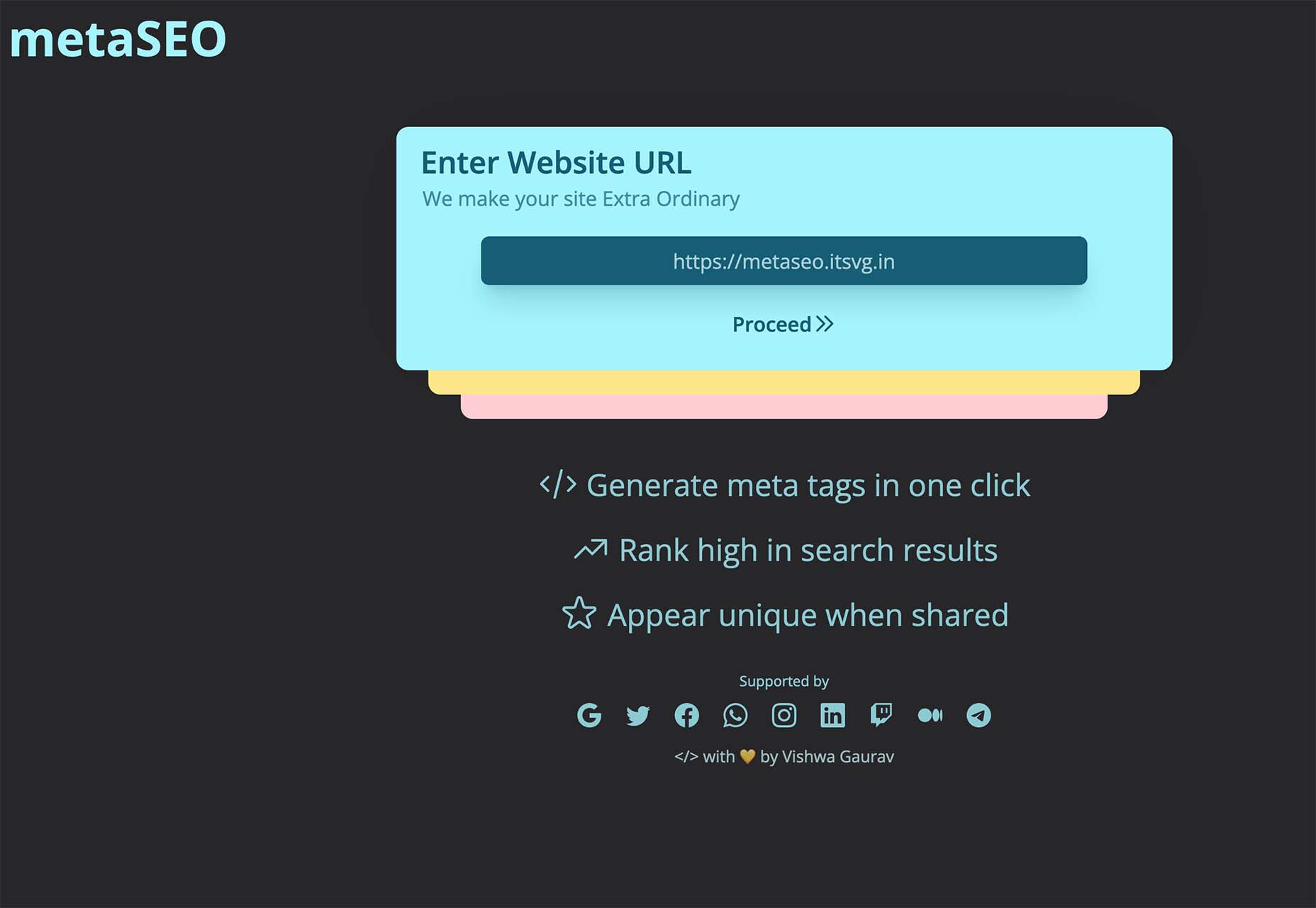
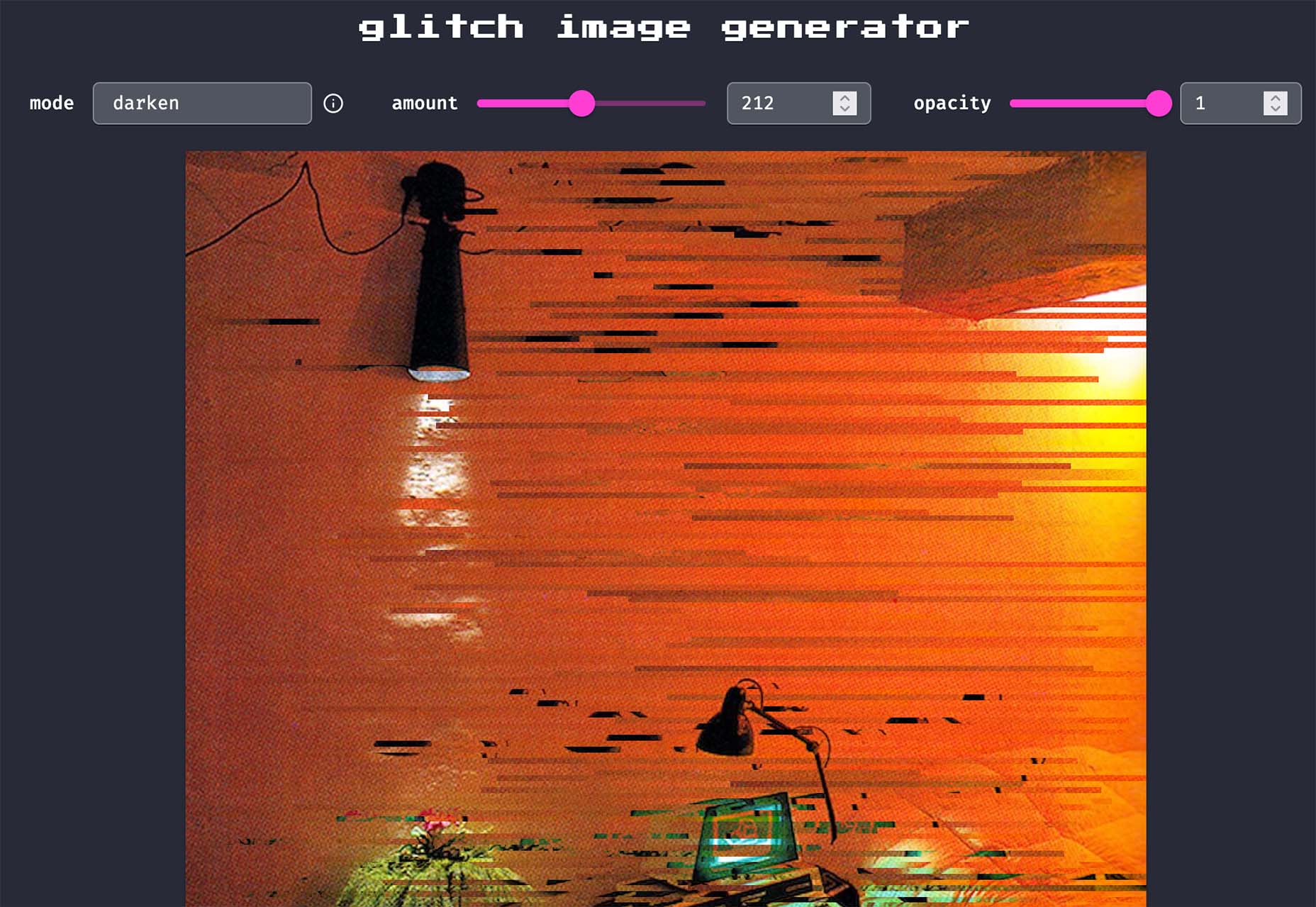





![]()



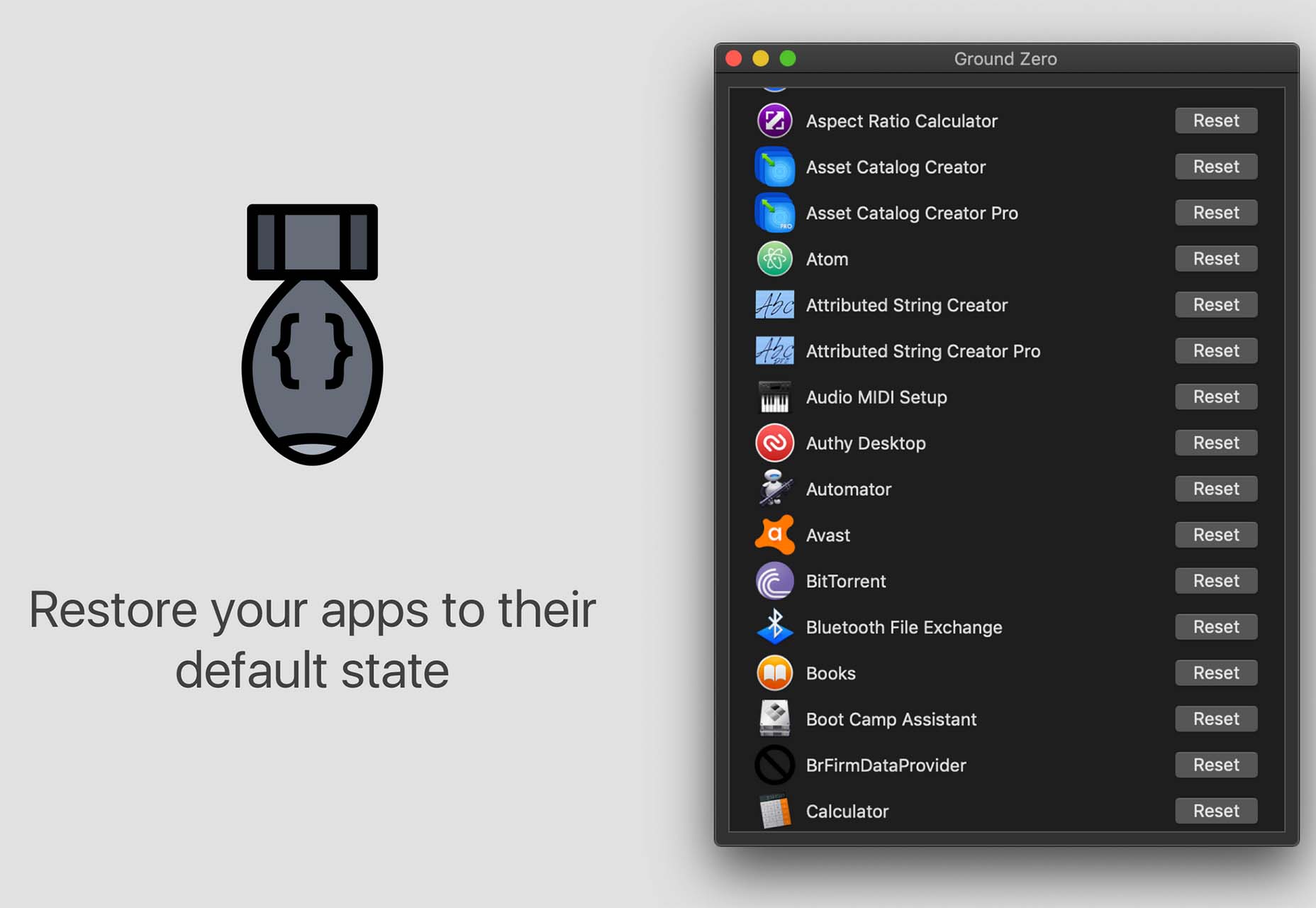




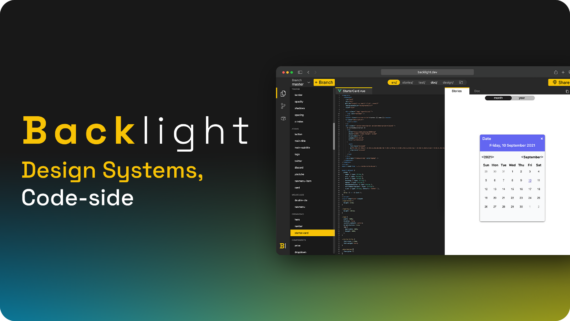









 The importance of scientific research cannot be overstated. User research is crucial to the success of any UX design, and this article will explain all the reasons why.
The importance of scientific research cannot be overstated. User research is crucial to the success of any UX design, and this article will explain all the reasons why.
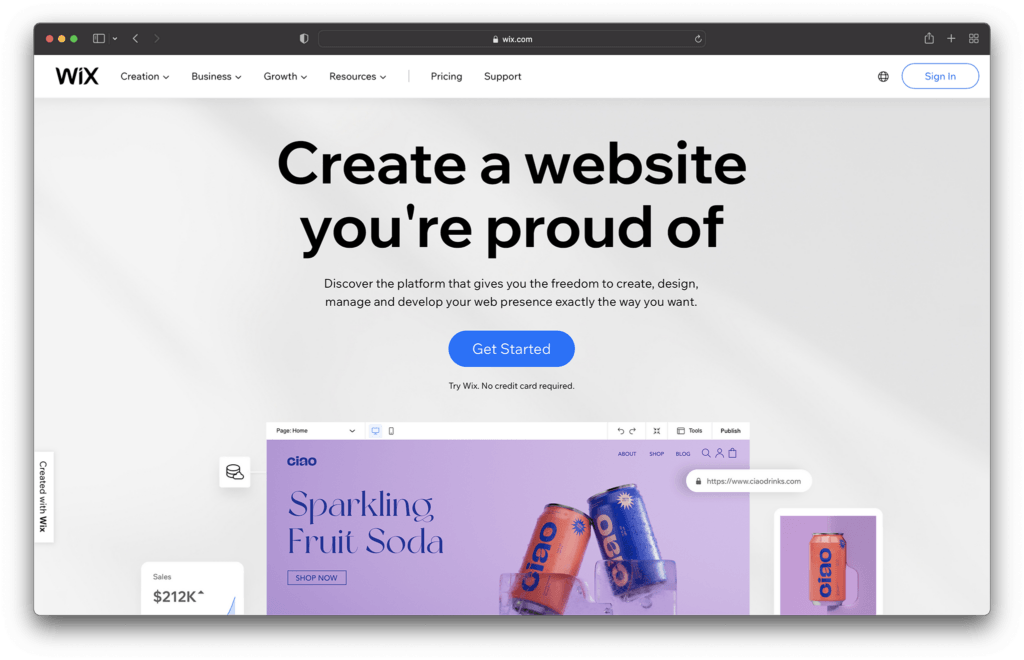
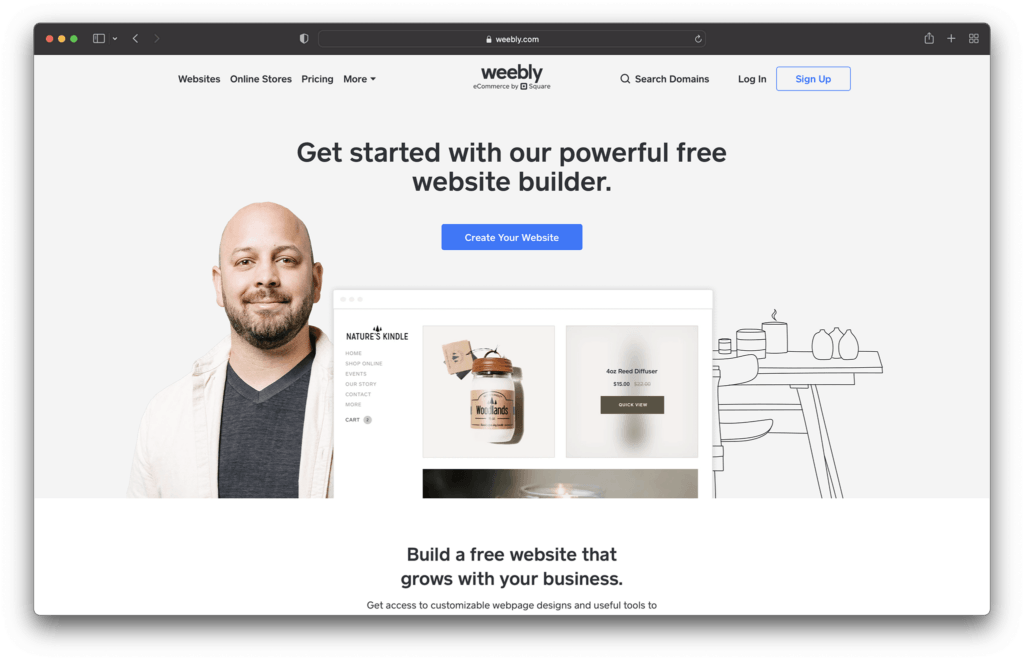


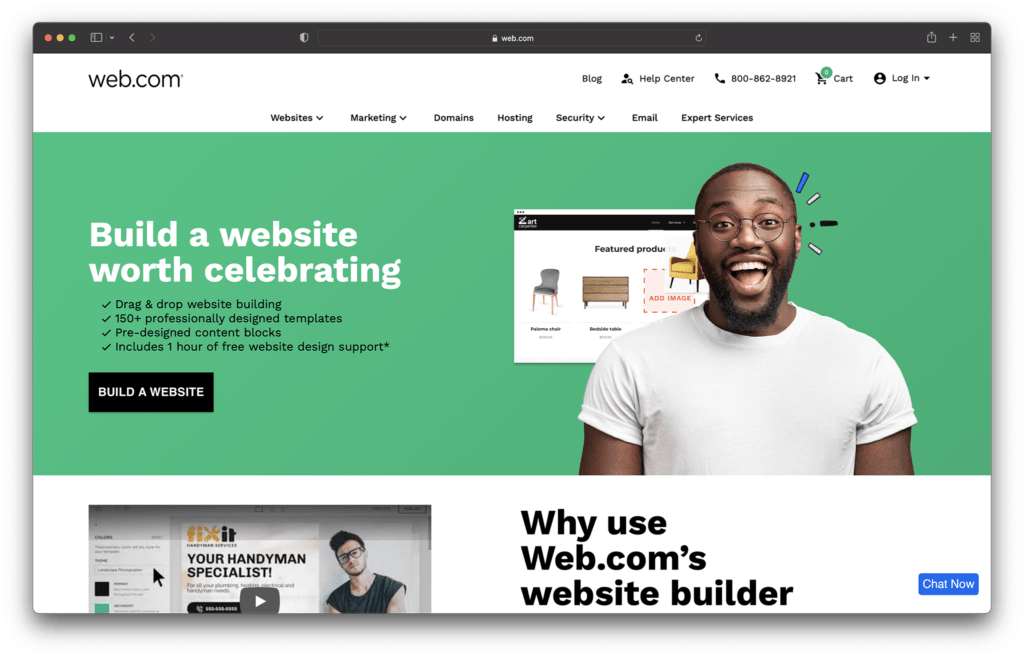











 https://nuka.me/
https://nuka.me/




























